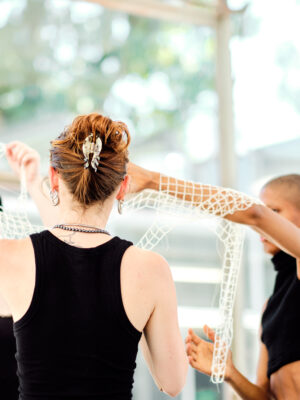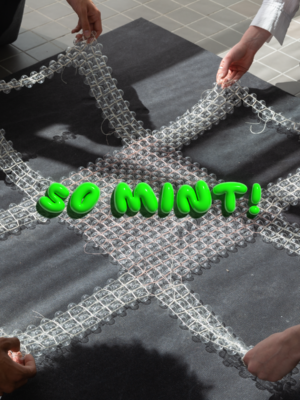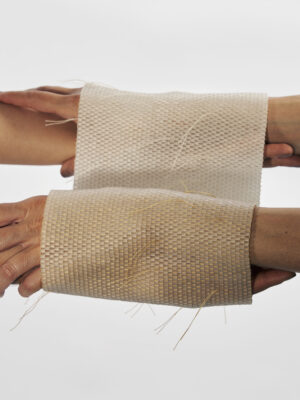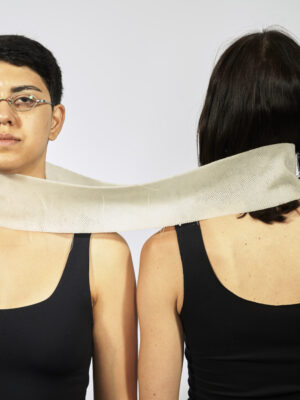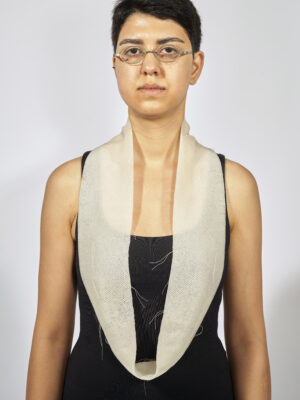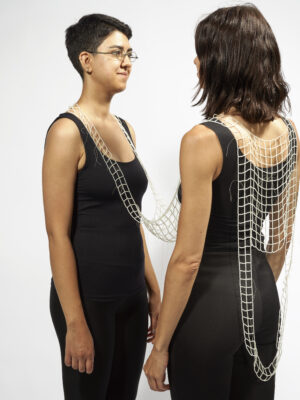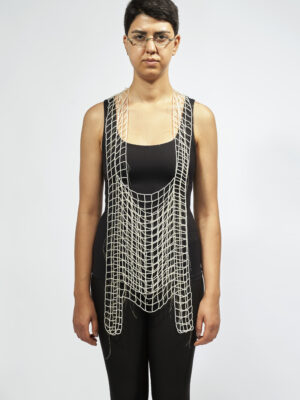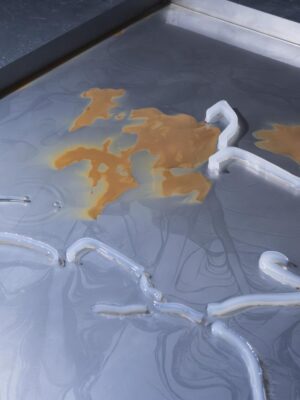Martina Bucci is a jewellery artist, born in Urbino (Italy) and based in Amsterdam. She first studied in Lisbon at Arco and recently graduated from the Gerrit Rietveld Academy. Her work embodies the concept of collective jewellery, created with the aim of fostering intimate interactions between individuals. Her practice reflects her fascination with beadwork and its repetitive, methodical, and detailed nature.
Fragile Interactions is a series of wearable objects that expand on the idea of collective jewellery, designed to create intimate interactions between individuals and explore how unfamiliar bodies interact with each other—how they move, observe, and respond both to and with each other. These objects can be seen as ‘extensions of the body’ or as connections that unify bodies, performing a kind of ritual. Viewers become participants as they are invited to slip into and between the objects, which experiment with different scales and weights and seek physical experiences. This process allows participants to gain self- and other-awareness, as they become conscious of their own bodily relationship with the objects and the various tactile sensations created by gently grasping and wearing them.
CO: What ideas or themes inspire your work?
MB: I remember always being fascinated by the image of those women who, gathered together on the doorstep, crocheted various forms of fabric by repeating hand gestures an infinite number of times. It was a romantic image of calm. I think this image sparked my fascination with this repetitive action. From there, I began to observe various actions and rituals related to repetition. I believe my work has been strongly influenced by this vision. It seems to me that repetitive gestures have a meditative quality; they are like mantras, creating a harmonious rhythm. So, I began to explore within the repetition—the beads replaced the threads and became the connecting element, thereby connecting human bodies.
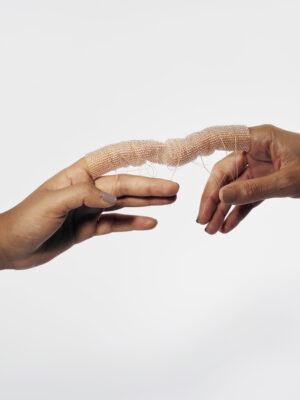
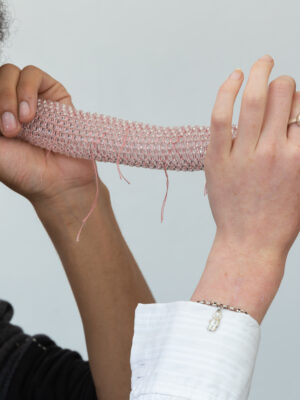
CO: What are the biggest challenges you face in your practice?
MB: My practice requires a lot of processing time, as the beads are very small elements to assemble together. Nevertheless, I would like to work on a larger scale, continuing this transposition between beads and human bodies. Time could therefore become quite a challenge in my practice, but I think it could be very interesting to create collaborations, also on the production level, to bring more people together and recreate a bit of what traditionally inspired my work. I would love to expand in a more social direction, perhaps working in hospitals, prisons, and social centres, to see how my work can grow and continue to create connections and intimate interactions.
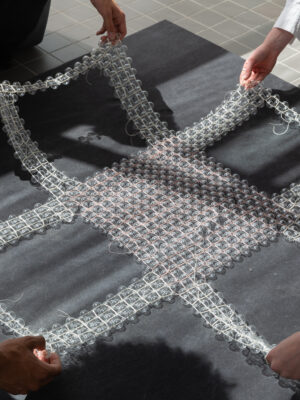
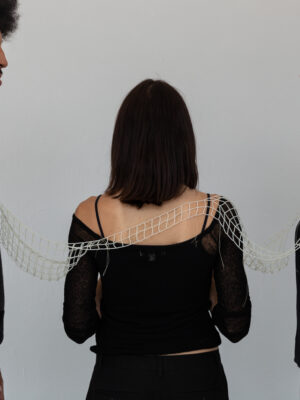
CO: Could you describe your approach, and how does it reflect tradition, current trends or push boundaries within the field?
MB: By its very nature, my work is inspired by traditional handicrafts. In designing my jewellery pieces, which I like to call collective jewellery, I wanted to keep the traditional element of handicraft making clearly visible. At the same time, I sought to explore the relationship with the body and movement, not neglecting the physical experience of interacting with objects, but rather aiming to create contact with and between different human bodies. I believe that jewellery can be a powerful tool to investigate the body, from the physical to the emotional sphere. Through my work, I have discovered and observed various human reactions.
